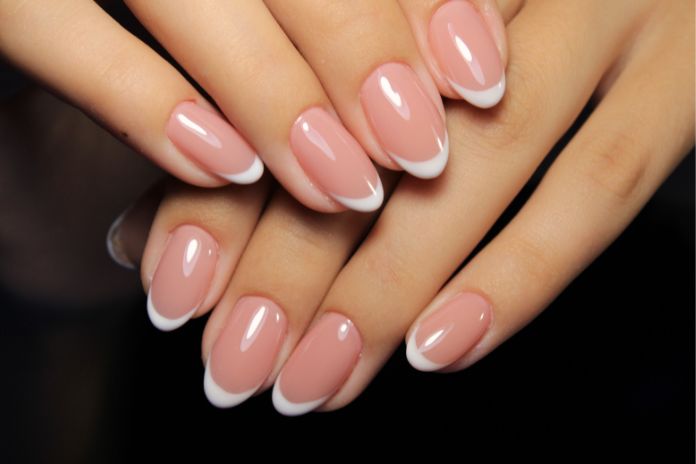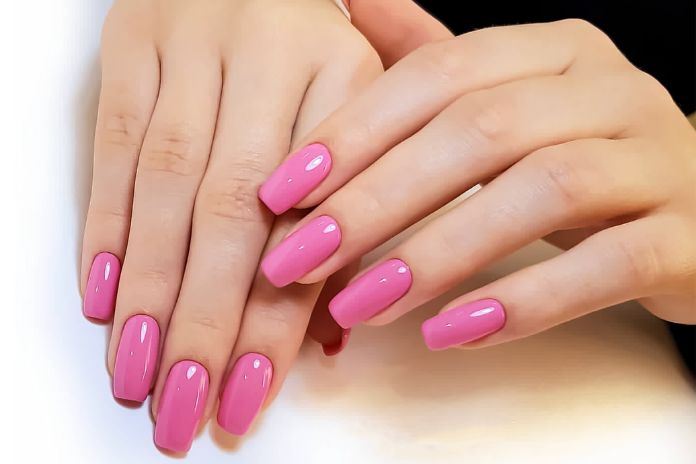Why Are My Acrylic Nails Lifting: Causes and Solutions

Are you tired of your acrylic nails lifting and ruining your perfect manicure? Acrylic nails are a popular choice for those who want to have longer, stronger, and more durable nails. However, lifting is a common problem that can occur with acrylic nails. If you are wondering why your acrylic nails are lifting, there are several factors that may be causing this issue.
One of the main reasons why acrylic nails lift is improper preparation of the natural nails. If your cuticles were not prepped correctly, or your natural nails were not filed and cleaned properly, this can cause lifting. Additionally, if nail primers and dehydrators were not used, or if an incorrect powder to liquid ratio was used, this can also lead to lifting. In this article, we will explore the reasons why acrylic nails lift and provide tips on how to fix and prevent this issue.
Contents
Causes of Acrylic Nail Lifting
Acrylic nails are a popular way to enhance the appearance of your natural nails. However, if they start to lift, it can be frustrating and lead to damage of your natural nails. There are several reasons why acrylic nails lift, including improper application techniques, harsh environments, and low-quality products.
Improper Application Techniques
One of the most common causes of acrylic nail lifting is improper application techniques. If the cuticles are not prepped correctly, the natural nails are not filed and cleaned properly, or the nail primers and dehydrators are not used, the acrylic nails may lift. Additionally, if the nail tips are not glued on correctly or the powder to liquid ratio is incorrect, the acrylic nails may not adhere properly.
To avoid lifting, it is important to follow proper application techniques. Make sure to prep the cuticles correctly and file and clean the natural nails before applying the acrylic mixture. Use nail primers and dehydrators to ensure that the acrylic adheres properly. Additionally, make sure to use the correct powder to liquid ratio and glue the nail tips on correctly.
Harsh Environments
Another cause of acrylic nail lifting is exposure to harsh environments. If you frequently expose your acrylic nails to water, chemicals, or extreme temperatures, they may lift. This is because these harsh environments can weaken the bond between the acrylic and the natural nail.
To prevent lifting due to harsh environments, it is important to protect your acrylic nails. Wear gloves when you are doing dishes or cleaning with chemicals. Avoid exposing your nails to extreme temperatures, such as hot water or freezing temperatures. If you must expose your nails to harsh environments, make sure to apply a top coat to protect the acrylic.
Low-Quality Products
Using low-quality products can also cause acrylic nail lifting. If the acrylic mixture is of low quality or the nail glue is not strong enough, the acrylic nails may lift prematurely. Additionally, if the nail forms or nail tips are of low quality, they may not adhere properly to the natural nail.
To avoid lifting due to low-quality products, it is important to use high-quality products. Make sure to use a reputable brand of acrylic mixture and nail glue. Additionally, use high-quality nail forms and nail tips to ensure that they adhere properly to the natural nail.
In summary, there are several reasons why acrylic nails may lift, including improper application techniques, exposure to harsh environments, and low-quality products. By following proper application techniques, protecting your nails from harsh environments, and using high-quality products, you can prevent acrylic nail lifting and enjoy beautiful, long-lasting nails.
Preventing Acrylic Nail Lifting
Acrylic nails can be a great way to enhance the look of your natural nails, but they can also be frustrating when they start to lift. Fortunately, there are several steps you can take to prevent acrylic nail lifting and keep your nails looking great.
Proper Application Techniques
One of the main reasons why acrylic nails lift is due to improper application techniques. To prevent lifting, it’s important to ensure that your nail technician is using the proper techniques. This includes properly prepping your cuticles, filing and cleaning your natural nails, using nail primers and dehydrators, and applying a top coat.
When prepping your cuticles, make sure that they are properly pushed back and trimmed. This will help to prevent lifting by ensuring that the acrylic does not come into contact with your cuticles. Additionally, make sure that your natural nails are properly filed and cleaned. This will help to ensure that the acrylic adheres properly to your natural nails.
Nail Maintenance
In addition to proper application techniques, it’s important to maintain your acrylic nails properly. This includes avoiding harsh environments, such as hot tubs and saunas, which can cause the acrylic to lift. It’s also important to avoid using your nails as tools, as this can cause them to lift as well.
To maintain your nails, make sure to keep them clean and dry. Use rubbing alcohol or acetone to remove any oils from your nails before applying the acrylic. Additionally, make sure to keep your nails properly hydrated by using cuticle oil and hand cream regularly.
Avoiding Harsh Environments
Finally, it’s important to avoid harsh environments that can cause your acrylic nails to lift. This includes exposure to water and harsh chemicals, such as cleaning products and solvents. If you must come into contact with water or chemicals, make sure to wear gloves to protect your nails.
By following these tips, you can help to prevent acrylic nail lifting and keep your nails looking great. Remember to maintain your nails properly, avoid harsh environments, and use proper application techniques to ensure that your acrylic nails stay in place.
Treating Acrylic Nail Lifting
If you’re experiencing acrylic nail lifting, don’t worry – it’s a common issue that can be easily treated. Here are some tips to help you get your nails back to looking their best.
Removing Lifted Nails
The first step in treating acrylic nail lifting is to remove any lifted nails. This will allow you to inspect the natural nail underneath and determine if there is any damage or fungal infection present. To remove a lifted nail, follow these steps:
- Soak your nails in warm, soapy water for 10-15 minutes.
- Gently lift the edge of the acrylic nail using a cuticle pusher or orange stick.
- Use a pair of nail clippers to carefully trim away any lifted or damaged parts of the nail.
- File the remaining acrylic nail down to the natural nail bed.
Treating Fungal Infections
If you notice any signs of a fungal infection, such as discoloration, thickening, or a foul odor, it’s important to treat it promptly. Fungal infections can cause serious damage to your natural nails and can even spread to other parts of your body. Here are some tips for treating a fungal infection:
- Apply an antifungal nail treatment, such as tea tree oil or an over-the-counter medication.
- Keep your nails clean and dry, and avoid wearing tight-fitting shoes or socks.
- If the infection doesn’t improve within a few weeks, see a doctor or dermatologist for further treatment.
Reapplication of Acrylic Nails
Once you’ve removed any lifted nails and treated any underlying issues, you can reapply your acrylic nails. Here are some tips to ensure a successful application:
- Make sure your natural nails are clean and dry before applying acrylic.
- Use a high-quality acrylic powder and liquid, and mix them according to the manufacturer’s instructions.
- Apply the acrylic in thin layers, allowing each layer to dry completely before applying the next.
- Be sure to seal the edges of the acrylic nails to prevent lifting.
By following these tips, you can treat and prevent acrylic nail lifting and keep your nails looking beautiful. Remember to keep your natural nails healthy and clean, and don’t hesitate to seek professional help if you need it.





